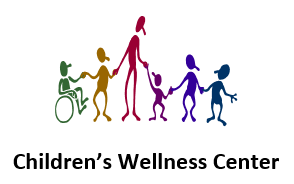During the first several years of life, a child undergoes impressively rapid and extensive growth, development, and learning to achieve different types of developmental milestones, including physical, emotional, social, cognitive, and language. Reaching appropriate language milestones is vital to a child’s ability to communicate and interact, and their social and emotional development largely depends upon the development of communication skills.
What Is Language Development?
Early language development starts in infancy, and it is the natural process through which children develop a foundation for communication. By achieving language milestones, children learn receptive language (hearing and understanding) and expressive language (producing and using) through daily interactions and exposure to different sounds, speech, environments, and activities.
Children gradually develop language skills as they acquire, experience, and learn key components of language development, such as:
- Voice and sounds (phonetics)
- Speech and vocabulary (semantics)
- Sentence construction and grammar (syntax)
- Contextual or social understanding of language (pragmatics)
Language Milestones by Age: What to Expect and When
Every child is different and may develop on a slightly different schedule. However, parents should watch for the following language milestones to occur on this approximate schedule:
Birth to Three Months
- Reacts to loud sounds
- Smiles or calms when spoken to
- Recognizes a caregiver’s voice
- Stops feeding in response to sound
- Makes sounds of pleasure (coos)
- Cries differently for different needs
Four to Six Months
- Follows sounds with eyes
- Notices sound-making toys
- Notices music
- Reacts to changes in voice tone
- Laughs
- Babbles using many different speech-like sounds (including sounds starting with b, p, and m sounds)
- Makes gurgling sounds
- Babbles when happy, excited, or unhappy
Seven Months to One Year
- Looks and turns in the direction of sounds
- Plays pat-a-cake and peek-a-boo
- Listens when spoken to
- Understands simple, common words
- Responds to simple requests
- Babbles using short or long groups of sounds
- Imitates speech sounds
- Gets attention with babbling
- Uses gestures to communicate
- Has a first word by first birthday
One to Two Years
- Understands simple questions and follows simple commands
- Knows a few parts of the body
- Listens to simple stories, rhymes, and songs
- Points to pictures named in books
- Learns new words regularly
- Puts two words together
- Asks short questions
- Begins words using several different consonant sounds
Two to Three Years
- Has words for almost everything and names objects
- Communicates with two and three-word phrases
- Family and friends can understand speech
- Uses more challenging sounds like d, f, g, k, n, and t
Three to Four Years
- Talks about activities
- Speaks with sentences using four or more words
- Answers simple questions (who, what, why, or where)
- Speaks easily without repeating syllables
Four to Five Years
- Communicates easily with adults and other children
- Hears and understands what is said
- Can answer simple questions after listening to a short story
- Includes several details in sentences
- Tells stories focused on a single topic
- Uses rhyming words
- Uses mostly correct grammar
- Names some letters and numbers
- Pronounces most sounds correctly (except maybe some of the more challenging ones like ch, l, r, s, th, v, and z)
Achieving Speech Milestones: How to Support Language Development
Parents and caregivers can create an environment and lead activities to support language development starting at birth. To build early language skills, consider the following:
- Talk, sing, and read to your child regularly starting at birth
- Use picture books to make reading more interactive (point and name pictures, ask questions, and vary your voices for different characters)
- Play music
- Narrate daily routines
- Ask questions (even before your child knows how to answer you)
- Encourage communication by responding to your child’s vocalizations and gestures
- Use interactive, back-and-forth play
- Peek-a-boo and pat-a-cake
- Imitate and respond to your child’s gestures and sounds
- Use props to act out scenes and tell stories
- Use rich, descriptive words
- Repeat and expand your child’s words and phrases
Be Aware of These Language Milestone Red Flags
Language development red flags can include any delay in achieving language milestones, a lack of language milestones, or a regression. For example, no babbling or responding to loud noises by nine months, having no single words by 18 months, or the loss of any previously acquired language or speech skills.
When to Seek Help With Your Child’s Early Speech Milestones
If your child exhibits language development red flags for their age or you notice your child experiencing any regressions in their language milestones, you should seek professional evaluation and help from a pediatrician.
The earlier delays are identified and intervention is taken, the more significant and positive the outcome will be for your child.
Pediatric Language Development Monitoring and Support for Children and Parents
At Children’s Wellness Center, our experienced pediatricians are here to support you and your child to help ensure healthy development and a strong language foundation for life. To learn more about language development milestones or to discuss any concerns you might have about your child, we welcome you to contact us.

